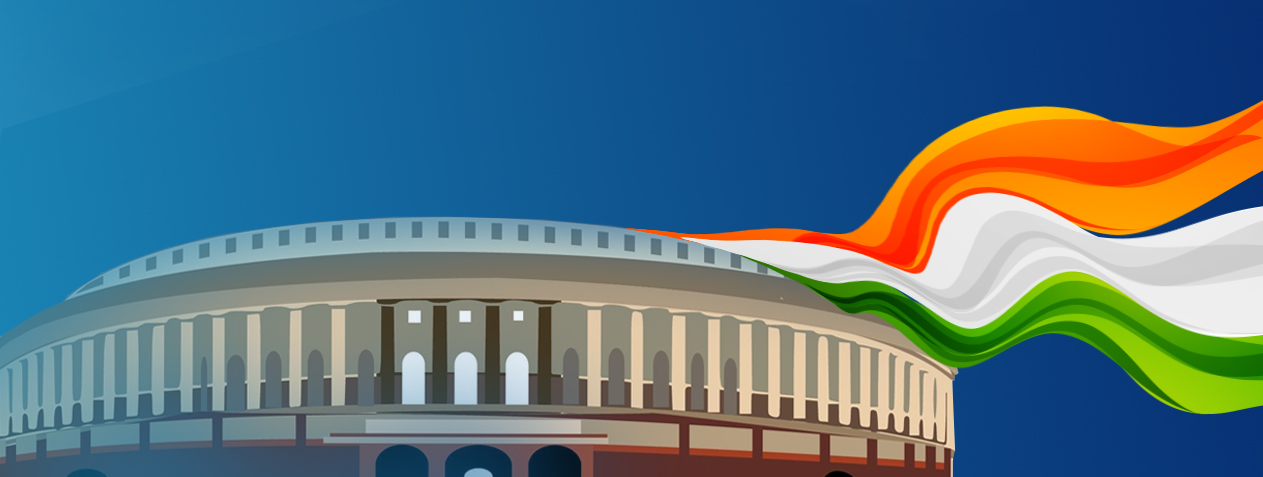National Waterbody Census
WHY IN NEWS?
Recently, First time in the Indian history, the Ministry of Jal Shakti has conducted the national water body census across the nation.
WHAT IS WATER BODIES?
All natural or man-made units bounded on all sides with some or no masonry work used for storing water for irrigation or other purposes is known as water bodies.
NATIONAL WATERBODY CENSUS:
• The Ministry of Jal Sakti has released the report of comprehensive data base of ponds, tanks, lakes and reservoirs in the country.
• As per the report, West Bengal’s south 24 Pargana has been ranked as the district having the highest (3.55 lakh) number of water bodies across the country.
• The district is followed by Andhra Pradesh’s Ananthapur (50,537) and West Bengal’s Howrah (37,301).
OBJECTIVES OF CENSUS OF WATER BODIES:
• To develop a national database for all water bodies by collecting information on all important aspects of the subject including their size, condition, status of encroachments, use, storage capacity, status of filling up of storage etc.
HOW WERE THE CENSUS DATA COLLECTED?
• According to the census report, traditional methodology was used. It was based on, paper based schedules, and that were used for both rural and urban areas.
• A “village schedule”, “urban schedule”, and “water body schedule” were used, and a smart phone was used to capture latitude, longitude, and photo of water bodies.
CENSUS’S KEY FINDINGS AND FEATURES:
• There are 24,24,540 water bodies in the country, with 97.1% (23,55,055) in rural areas and only 2.9% (69,485) in urban areas.
• West Bengal, Uttar Pradesh, Andhra Pradesh, Odisha and Assam are the top 05 states in terms of the number of water bodies, accounting for approximately 63% of the total water bodies in the country.
• Ponds account for 59.5% of all water bodies, with tanks (15.7%), reservoirs (12.1%), tanks/check dams (9.3%), lakes (0.9%) and others (2.5%).
• Private entities own 55.2% of the water bodies, while public entities own 44.8% of the water bodies.
• Panchayats own the greatest number of public-owned water bodies, followed by State Irrigation/State WRD.
• Individual owners/farmers own the most private water bodies, followed by groups of individuals and other private bodies.
• Man-made water bodies account for 78% of all water bodies, while natural water bodies account for 22%.
• Enumerated water bodies are reported to be encroached, with 95.4% in rural areas and the remaining 4.6% in urban areas.
• The data on water spread area was reported for 23,37,638 water bodies. 72.4% of these water bodies have a water spread area of less than 0.5 hectares, 13.4% have a water spread area of 0.5-1 hectare, 11.1% have a water spread area of 1-5 hectares and the remaining 3.1% have a water spread area of more than 5 hectares.
• West Bengal, Assam, Andhra Pradesh, Odisha and Jharkhand are the top five states in terms of privately owned water bodies.
• Major water bodies are reported to be used in pisciculture, followed by irrigation, of all ‘in use’ water bodies.
• West Bengal, Assam, Odisha, Uttar Pradesh and Andhra Pradesh are the top five states in terms of water body use in Pisciculture.
• Jharkhand, Andhra Pradesh, Telangana, West Bengal and Gujarat are the top five states in terms of Water body use.
NEED FOR WATER CENSUS:
• India is facing a water crisis: Groundwater decline, Biodiversity loss, and Climate change increasing the frequency of floods and droughts, in this context, water bodies are important.
• Buffering: They buffer against climate variability, holding flood waters for use in dry periods.
• Water security: They contribute to food and water security as well as livelihoods by recharging groundwater and providing water for irrigation and livestock.
• Ecological maintenance: Water bodies are increasingly under threat from pollution, encroachment, urbanization, and drying. So maintaining ecological is significant to the country.
GROWING WATER STRESS IN INDIA:
• “Water stress occurs when the demand for water exceeds the available amount during a certain period or when poor quality restricts its use”.
• According to Niti Aayog report, the country has 18 percent of the world’s population, but only 4 percent of its water resources, making India the most water stressed in the world.
• A large number of peoples face high to extreme water stress in India.
GOVERNMENT INITIATIVE:
1. National Water Mission: The conservation of water, minimizing wastage and ensuring its more equitable distribution both across and within states through integrated water resources development and management.
2. Jal Kranti Abhiyan: It focus on water conservation and management in the country through a holistic and integrated approach involving all stakeholders.
3. MGNERGA water conservation: MGNERGA become the main force that is driving water conservation efforts all across rural India. The major work taken up includes check dams, ponds, renovation of traditional water bodies, etc.
WAY FORWARD:
• Action plans: If they are to be conserved and managed effectively, we need action plans which require baseline data.
• Management of water bodies: As water bodies are managed by different agencies from State to local to private entities, the data must be uniform and easily accessible.
• Requirement of knowledge: To actually manage water bodies, we need contextual and traditional knowledge of communities which are to be integrated with formal data.
• By local government: Water conservation program typically initiated at the local level or community level by the government.
• Better future: Conserving water bodies minimizes the effects of water shortages and helps us to build a better defense against future drought years.
CONCLUSION
• The Policymakers, administrators and all other stakeholders in this sector can work together to conserve and preserve water bodies using the comprehensive national database of all water bodies.
REFERENCE:
1. Yojana.gov.in
2. Pib.gov.in
3. Nrega.nic.in
4. Downtoearth.org.in


